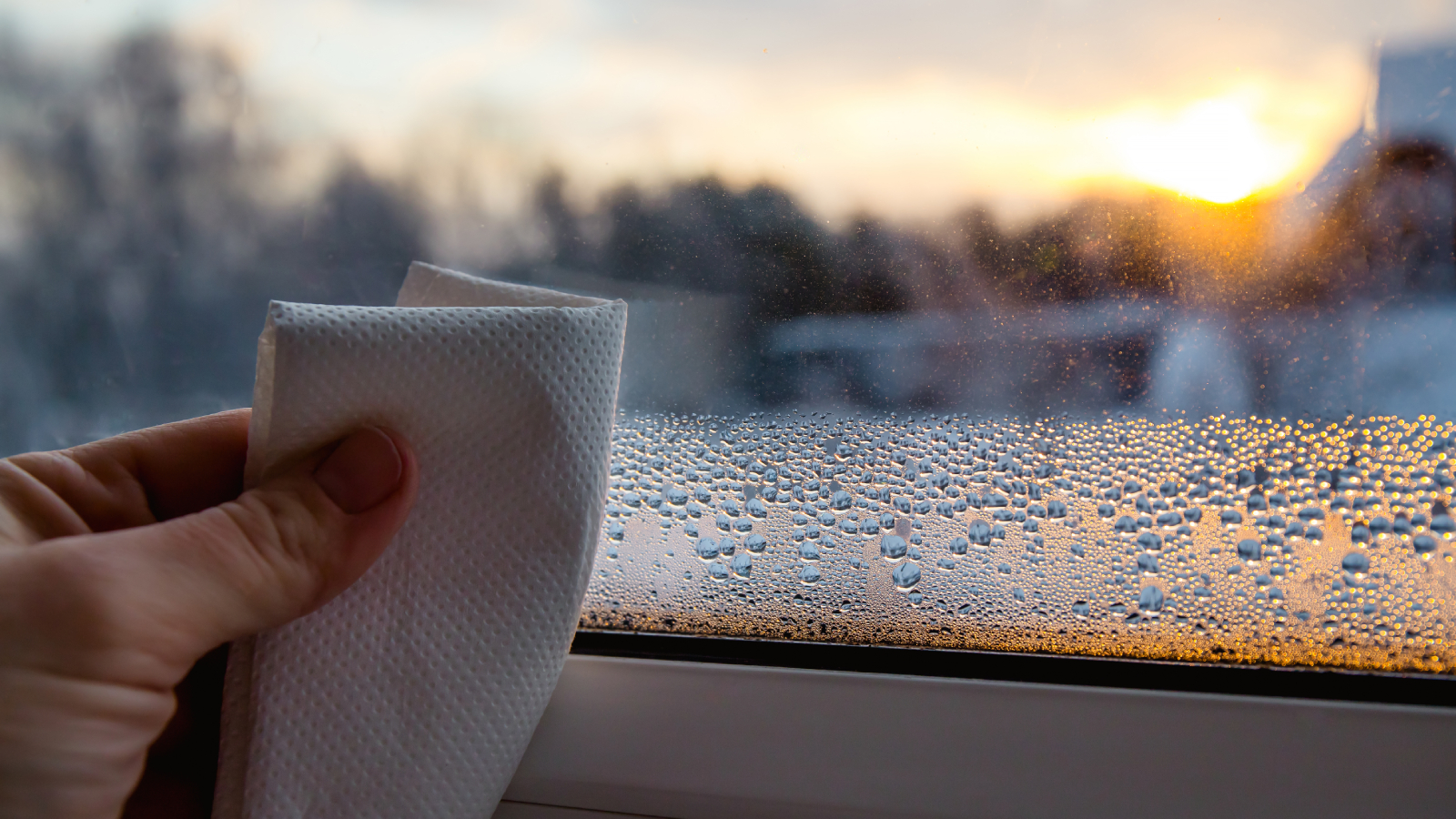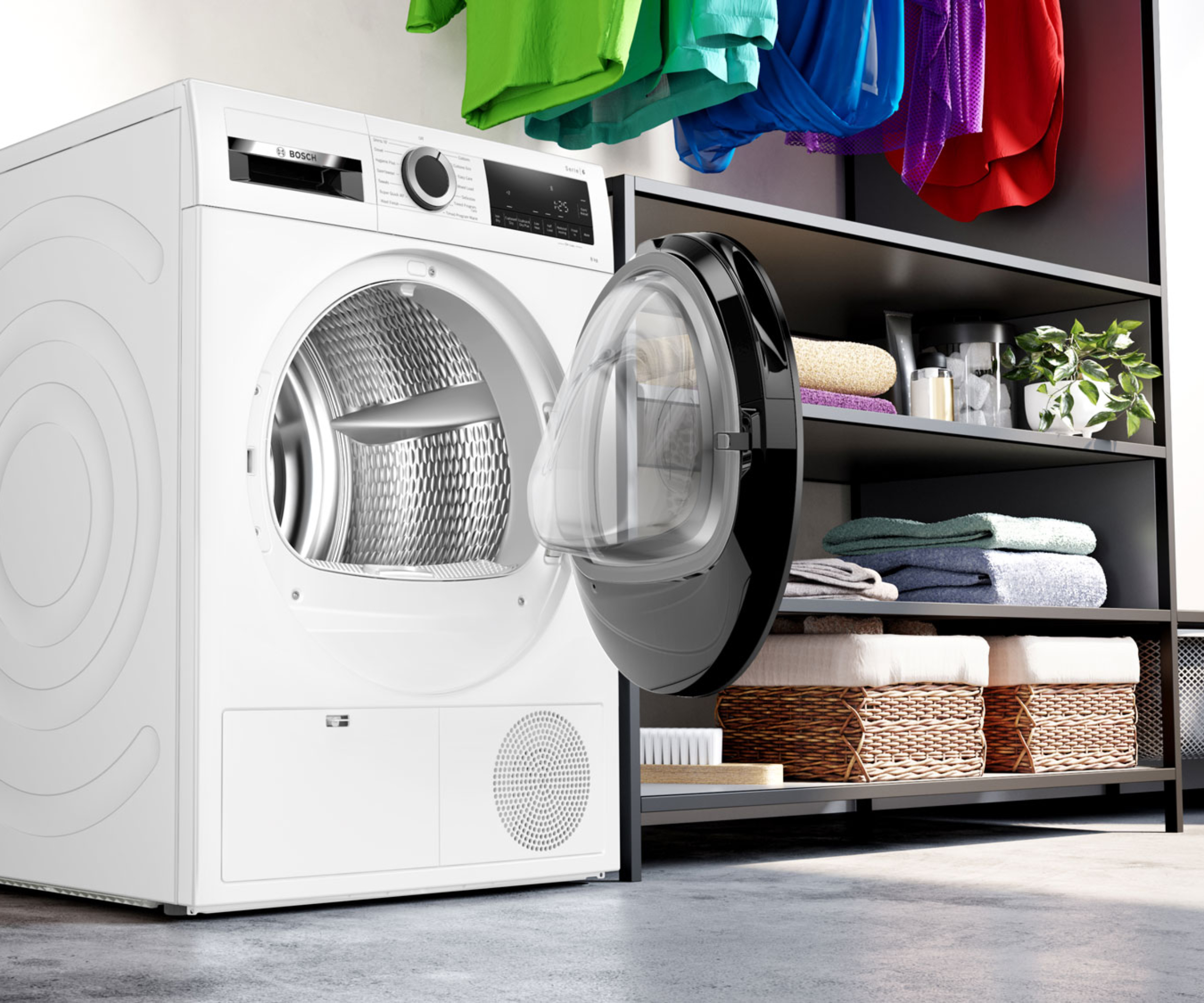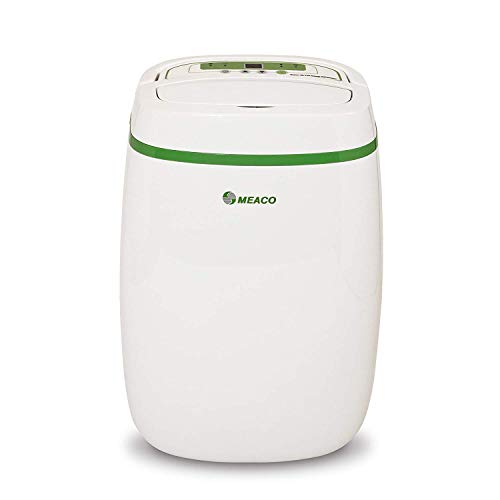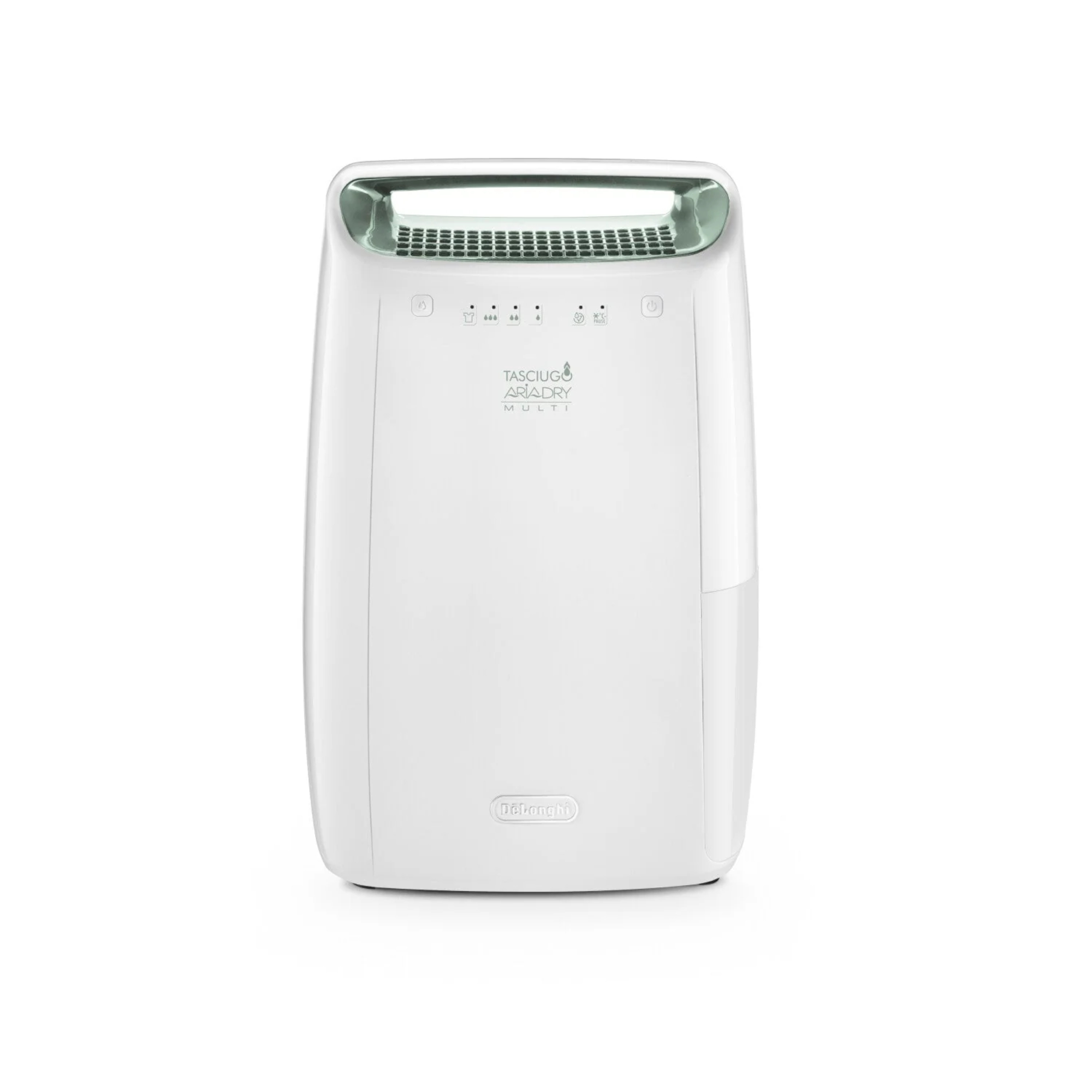How to stop condensation on windows from ruining your home: 11 ways to eradicate moisture
If you're wondering how to stop condensation on windows, we've asked the experts to share the best ways of both preventing it and dealing with the problem to prevent further damage to your home

If wet window cills and panes of glass coated in water are ruining your mornings, you'll be keen to know how to stop condensation on windows. As well as it looking unsightly, window condensation is also a cause of damp, mould and mildew in a home and can cause damage to your windows, your walls and even to your family's health.
There are several reasons for your windows suddenly becoming home to condensation, the most common ones being a lack of good ventilation, inadequate insulation and single glazing. So, how can you tackle these matters in order to stop window condensation?
In this guide, we explain, with the help of experts, how to stop condensation on windows and what you can do to prevent this from happening in the future.
Prevention is key in understanding how to stop condensation on windows
In an ideal world you wouldn't have a condensation problem to deal with in the first place — and this is where preventative measures come into play.
There are a number of ways to reduce the chances of condensation on windows and the good news is while some are long-term ways to prevent the problem from occurring in the future, others are easy short-term solutions, involving little time and low expense.
We asked a range of experts for their top tips on the best way to prevent, reduce and solve window condensation so you can look forward to opening your curtains in the morning, rather than dreading what you'll find.
How to stop condensation on windows
1. Throw open windows and doors
One of the cheapest and easiest ways of reducing window condensation is to let fresh air flow around your home.
Bring your dream home to life with expert advice, how to guides and design inspiration. Sign up for our newsletter and get two free tickets to a Homebuilding & Renovating Show near you.
"Simply opening a window and airing a room for 10-15 minutes a day will make a massive difference to the build-up of moisture in the home and is enough to exchange the air in an average-sized room," says Ryan Schofield, managing director of Thames Valley Window Company.
Although with rising energy bills, it's important to think of the downsides of relying too heavily on this method.
"Opening a window is a simple act that can help remove condensation, but this is only a temporary fix and has added repercussions," warns Chris Michael, managing director of Meaco. "The new air coming in from outside could be colder, requiring your heating system to work harder which will increase heating bills. Additionally, outside air may not be as clean and could bring in allergens and pollutants.
"You also need to consider how safe it is to leave a window open, and whether the air coming in is actually dryer than the air going out. Average relative humidity (RH) in the UK is often high enough throughout the year to create mould in your home (above 68% RH), and is certainly high enough to cause condensation."
As an alternative to opening windows too frequently, "it's a good idea to ensure your window has a trickle vent to it, to allow ventilation into your home," adds Jo Trotman, marketing manager at The Residence Collection.

Chris and Michelle Meaco founded Meaco in 2005 and have grown the company to be an award-winning supplier of domestic dehumidifiers.

Jo Trotman is an award-winning, qualified marketing expert with over 18 years’ industry experience. She has worked as a Marketing Manager at The Residence Collection, and sister company Window Widgets, for over three years.

2. Look for simple ways to reduce moisture levels
Have a think about those everyday activities that take place in your home that cause additional moisture and aim to either reduce them or take steps to offset this additional moisture when it occurs.
"Actions like putting lids on saucepans when cooking, doing an extra spin cycle when using the washing machine to avoid excessively damp clothes drying, and using the best bathroom extractor fans you can find when showering can help a lot," advises Chris Michael. "However, producing moisture is impossible for us to avoid entirely."
Drying clothes outside, where possible, will really help reduce indoor moisture levels. Also ensure vented tumble dryers are adequately vented outdoors.

3. Buy an inexpensive moisture collector
Another cost-effective way of cutting down on condensation is to buy a couple of moisture collectors or absorbers and place them in those areas of the home most prone to excess moisture.
These are basically small plastic boxes containing (usually refillable) gel or crystals which absorb moisture. When placed near a window they will absorb the moisture before it has chance to settle on the windows.
You can pick up something like the highly rated ANSIO Pack of 5 Condensation Removers on Amazon for under £10.
I bought the Unibond Aero 360 from Amazon for my son's bedroom last winter as it has single-glazed casement windows which were covered in condensation each morning. While it collected lots of moisture, it didn't stop the problem and in the end I decided to purchase a dehumidifier instead. This brings us nicely to the next recommendation for how to stop condensation on windows.
4. Invest in a dehumidifier
For many people, the very best way to reduce and even eliminate window condensation is to bite the bullet and invest in a dehumidifier — but just how do dehumidifiers work?
For dealing with most home condensation problems, if you're looking at a desiccant vs compressor dehumidifier, the latter tends to be the best option.
"This type of dehumidifier draws in the air and compressors have a cold-coils system, like a fridge," explains Chris Michael, "which is why they are often also referred to as ‘refrigeration dehumidifiers’. They have two sets of coils, the first cools to create the condensation, which is collected into the water tank, the second warms the dry air back to just above room temperature. This helps to create the dry air needed to combat condensation, mould and damp problems."
For more information on the benefit of dehumidifiers, find out which one came top in our best dehumidifiers buying guide.
Try these dehumidifiers to help stop window condensation
5. Mop or hoover up condensation quickly
If you do find condensation on your windows, despite your best efforts, it is important to deal with it quickly to avoid it causing damp or damage to the woodwork around your windows or you walls.
Window vacuums are a quick means of removing condensation from windows in the morning and as home renovator Michelle Guy discovered when she tried a window vacuum on her window condensation, it works.
"Cleaning up condensation with a Kärcher Window Vac can get instant results with a simple swipe," suggests Rossi Salvatore, assistant product manager at Kärcher.
"Kärcher Window Vacs are also a great time-saver as the powerful and rechargeable lithium-ion battery can clean up to 75 windows on one charge — getting the job done three times faster than conventional cleaning methods. What’s more, window vacuums can be used on any flat surface in the home including windows, showers, and mirrors, ensuring they all stay spotless and streak-free."
Right now, you can pick up the latest Karcher Window WV2 Plus for £59.99 from Amazon.

6. Keep your heating at a low and constant level
Warm up the house by putting central heating on to reduce the dew point (the point at which moisture from the air turns into water droplets). This works best by having the heating on low constantly, rather than turning it on only when the house feels cold. A steady, warm temperature is best, but as a minimum make sure your heating turns on when the house is at its coldest.
"Issues with condensation are intensified by sudden rises and drops in temperature, as each fluctuation causes water to evaporate and condense when your central heating turns on and off," explains Louis McGee, glazing expert at Cloudy2Clear, double glazing replacement specialists.
"Rather than allowing your heating to swing between hot and cold, keep your heating on a constant low temperature. This will help to prevent damp from forming in your home."
7. Consider installing a PIV system
"Positive input ventilation (PIV) is designed to control condensation and offers a highly effective solution to eradicate mould and improve indoor air quality," says Natasha King, RMI production manager from Vent-Axia.
PIV units are generally installed in the loft, with a distribution diffuser mounted in the ceiling in the room below. The continual supply and slight positive pressure result in the air in the property being continually diluted, displaced and replaced to create a healthier indoor air quality.
"PIV systems dilute moisture in the air and provide fresh, filtered, tempered air into the home that is drier than the inside air. PIV with additional heating function also helps increase the incoming air temperature. This creates a healthy indoor environment and reduces the risk of condensation and mould, benefiting both the occupants and the structure of the building," says Natasha.
8. Think about upgrading your home insulation
For less efficient houses, one of the best investments to make is to look at the best types of insulation.
While this could include cavity, internal or external wall solutions, as well as looking at how your loft and roof are insulated, all of which will improve the ambient temperature in your home, reducing the gap between the temperature indoors and outdoors. But it's equally important not to overlook the effect that proper draught proofing can have.
Draught proofing windows is an efficient and cost-effective way to ensure your house stays warmer for longer. As a starting point, try adding the Yotache Foam Seal Tape from Amazon around your window and door frames.
9. Consider window replacement or repair
This is a more extreme option, but better insulated windows – in the form of highly efficient double glazing or triple glazing – deliver greater thermal performance and reduce cold spots. If yours are old and past their best, then this could be a good option.
"The quality of your window can help dramatically if you want to know how to stop window condensation," says Jo Trotman. "A window's performance in retaining heat is ranked on U-Values, a measurement of heat loss and the rate in which heat is lost.
"Single-glazed windows will inevitably cause condensation," says Jo, "as they have a high U-Value (usually around 5-6W/m2K), are the thinnest part of a wall and have a far lower surface temperature than the rest of the home. Altogether this makes single-glazed windows more likely for condensation and dampness.
"Double glazing and triple glazing are the better option to help reduce the risk of damp as they have an extra layer of protection against the outside and have much lower U-Values too.
Ideally says Jo, "you want to be considering a window energy rating of A++, with U-values as low as 0.74W/m2K for triple glazing and 1.2W/m2K for double-glazed options."
The added bonus? Reduced noise pollution, but don't be worried if after installing a double or triple glazed unit you see condensation outside windows. This is not condensation to be worried about as it won't cause damp and mould internally.

10. Secondary glazing can be an option in older homes
In those homes such as listed buildings, or those located in conservation areas, double or triple glazing may not be permitted. In this instance, you could consider secondary glazing as a means of minimising heat loss and controlling the levels of condensation on your windows.
However, it is one that needs all of your existing window glazing and frame to be in good working order before you install it. Tom Coles, Managing Director for Mitchell & Dickinson, explains.
“There are two sources of condensation. The first is caused by warm, moist air from inside the room touching the cold glass and condensing. This is reduced with the installation of a system such as our Cosy Glazing secondary glazing system but we cannot guarantee it will eradicate it completely.
"The second source of window condensation is caused by external sources of moisture from the building fabric such as from broken putty allowing rain to leak in under each pane of glass and settle on the lower glazing bars, particularly after rainfall," says Tom.
"Secondary glazing can trap this water in the void, which can then cause condensation. Therefore, when installing secondary glazing, it is advisable to keep putty and paintwork in good condition. This also increases the life of the window," he adds.
11. Include an MVHR system in a new build
MVHR (mechanical ventilation with heat recovery) systems are now being installed in many more self builds and there is a good reason why.
As building methods mean new homes are increasingly built with better insulation, and are even more airtight, the risk is in the reduction of natural ventilation and fresh air. The benefits of MVHR systems can subsequently be numerous, reducing issues such as condensation and mould and improving the air quality for homeowners — particularly important if you have family members with respiratory problems or allergies.
FAQs
Do blinds and curtains make window condensation worse?
Blinds and curtains can trap moisture between them and windows, increasing the chances of condensation. The best way to avoid this issue is to open blinds and windows early in the morning to let the air move around.
If you have blinds in kitchens and bathrooms, make sure they are regularly opened, closed and cleaned to ensure moisture and damp does not build up on them.
While window condensation can be one issue caused by poor ventilation, it's equally important to know how to stop condensation on walls, condensation on cold water pipes and make sure you follow advice for insulating a loft in order to prevent damp and mould appearing in other areas of your home too.
Amy is an interiors and renovation journalist. She is the former Assistant Editor of Homebuilding & Renovating, where she worked between 2018 and 2023. She has also been an editor for Independent Advisor, where she looked after homes content, including topics such as solar panels.
She has an interest in sustainable building methods and always has her eye on the latest design ideas. Amy has also interviewed countless self builders, renovators and extenders about their experiences.
She has renovated a mid-century home, together with her partner, on a DIY basis, undertaking tasks from fitting a kitchen to laying flooring. She is currently embarking on an energy-efficient overhaul of a 1800s cottage in Somerset.




